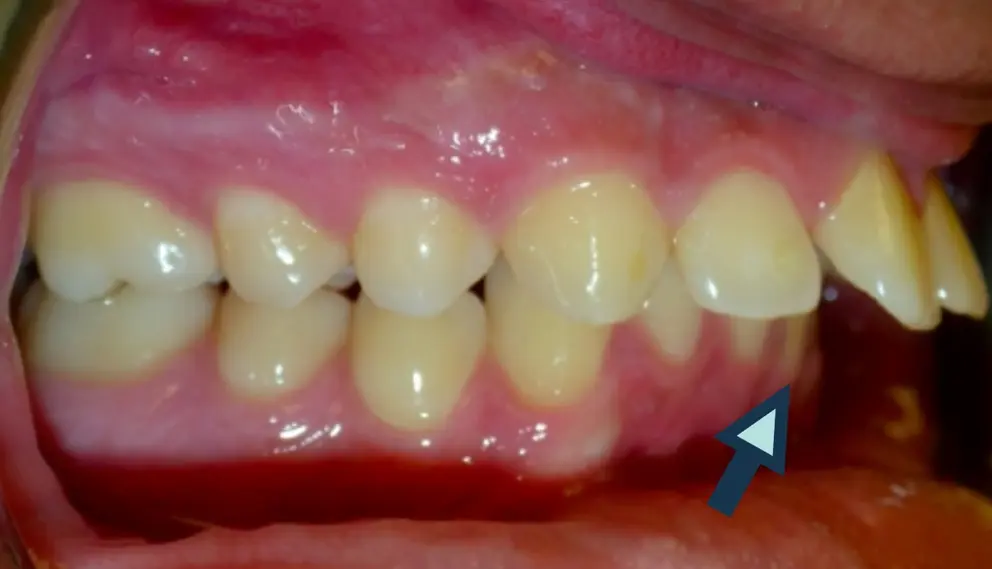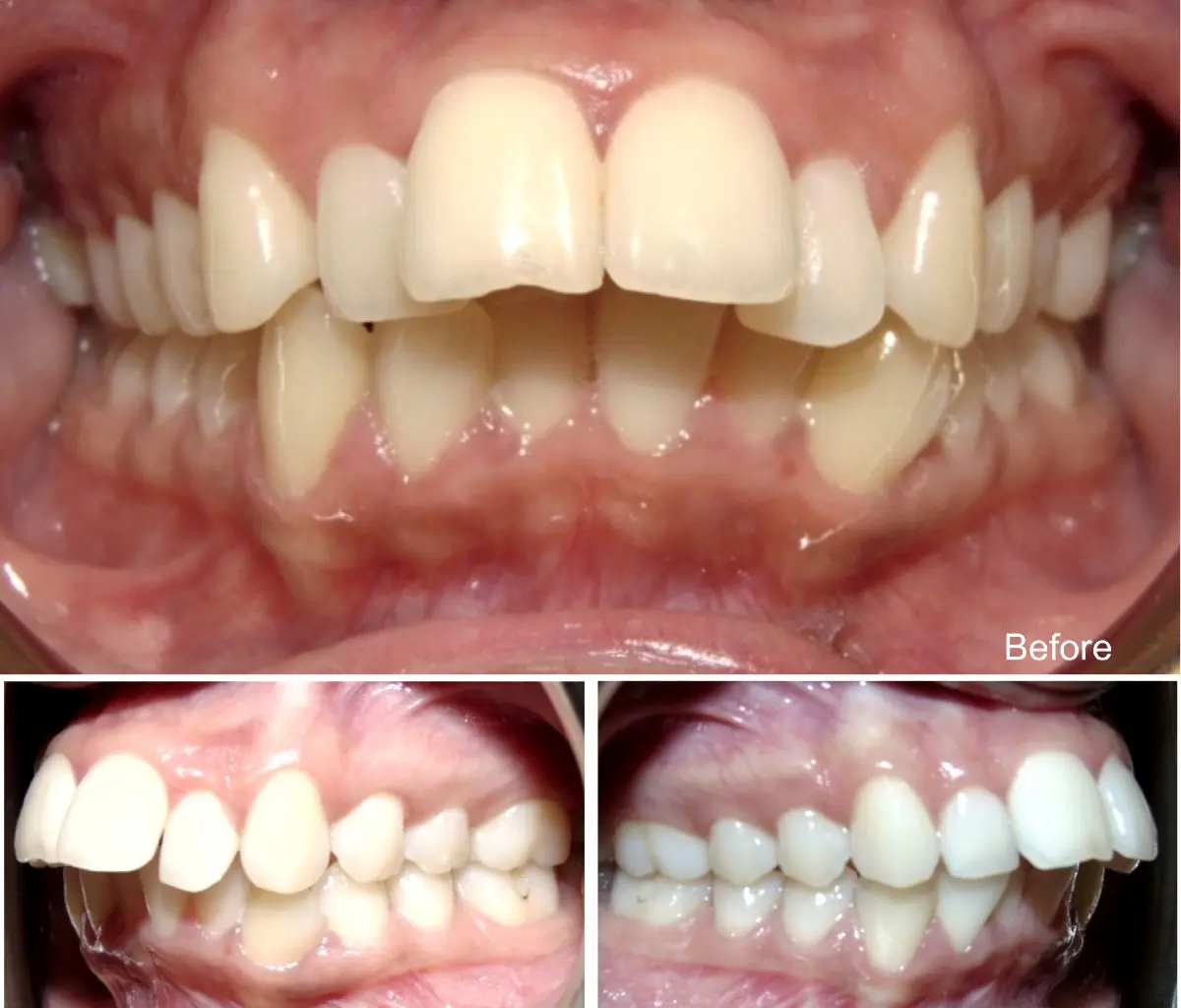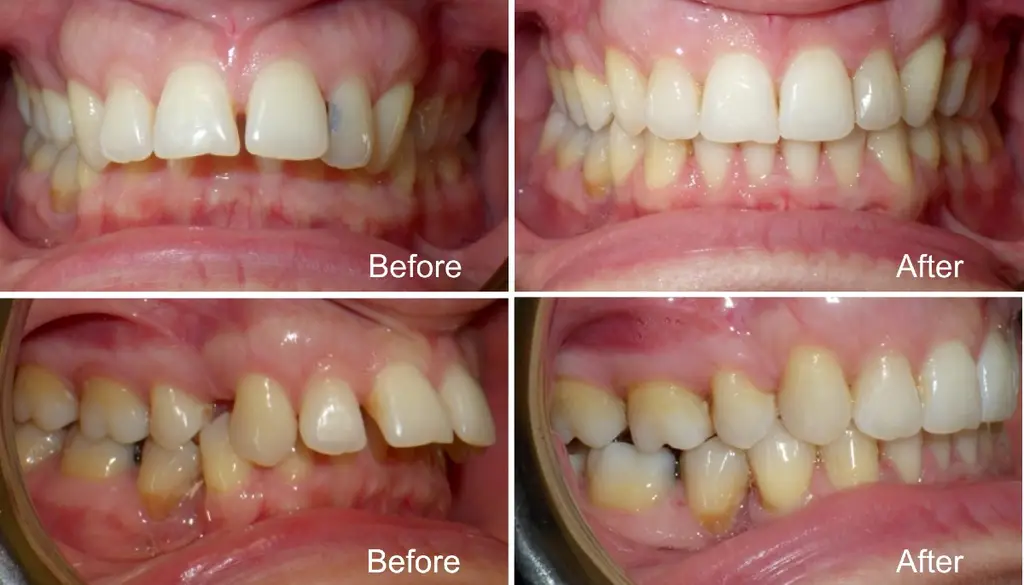Overjets can occur due to various factors, including skeletal issues related to jaw and dental root
development, as well as developmental factors associated with tooth
growth. These factors can lead to the development of overjet, which is characterized by the protrusion of
the upper front teeth beyond the lower front teeth.
Skeletal causes of overjet stem from the way the jaw and dental roots develop. These structural issues can
result in the misalignment of teeth, leading to an overjet.
On the other hand, developmental factors pertain to the natural growth and positioning of the teeth
themselves, which can also contribute to the presence of overjet.
Understanding the causes and symptoms of overjet is crucial in determining appropriate treatments, including
options like tooth-colored braces or Invisalign treatment.
These treatments aim to correct the alignment of the teeth and address overjet-related issues.
Overjets, like other orthodontic issues, can be hereditary: if your parents, grandparents, or another close
relative has an excessive overjet, there’s a good chance you
inherited your bad bite from your genes
External factors can cause an overjet to develop
. Some of these include:
- Thumb sucking
- Prolonged use of a pacifier or bottle
- Excessive tongue thrusting
- Overcrowded teeth
- Late growth of adult teeth
Whatever the causes, an overjet can be corrected with careful supervision by an experienced orthodontist.
Schedule Overjet Correction Consultation



